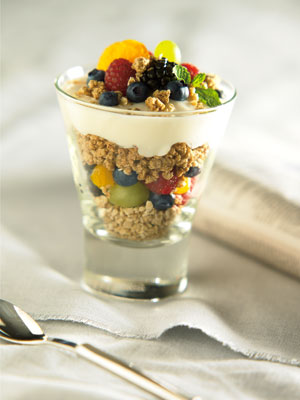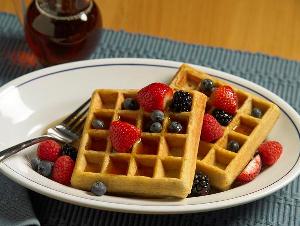Missing: Whole Grains on Breakfast Menus
06 September 2010By Jen Wulf
 They’re easy to include, but hard to find.
They’re easy to include, but hard to find.
Annually, more than 12 billion morning meals are served by commercial restaurants (NPD CREST, YE May 2010). Curiously missing on most breakfast menus are whole-grain items. A mere one in three breakfast menus offer any item made with whole grains, and those tend to be either hot or cold breakfast cereals (Datassential MTD, July 2010).
With heart disease and diabetes constant concerns across our country, many consumers are looking for healthier options at breakfast. According to Mintel, 77% of restaurant users “would like to see more healthy items on the menu” (Mintel Healthy Dining Trends, May 2009).
Eating whole grains lowers the risk of many chronic diseases including heart disease and diabetes. Despite their numerous benefits, whole grains are lacking from most Americans’ diets. USDA guidelines recommend that at least 50% of our daily grain intake should come from whole grains. But the average American consumes only 11% instead of 50% (NPD Group, December 2008). Breakfast is the meal in which the majority of our whole grains are consumed.
Oatmeal is one whole-grain breakfast item that is growing in popularity among consumers, and has increased 100% on menus from 2005 to 2009 (Mintel Menu Insights, August 2009). Oatmeal is customizable to personal taste and can offer additional benefits when topped with dry fruit or products such as Sustagrain high-fiber barley flakes from ConAgra Mills. Sustagrain offers three times the fiber of oat flakes. With Starbucks and McDonald’s introducing oatmeal, it’s quickly becoming a mainstream breakfast item.
Cold cereal is one of the easiest ways to incorporate whole grains at breakfast. Restaurants like The Cereal Bowl and Cereality have taken consumers’ favorite at-home breakfast to a whole new level. These chains allow consumers to create their own breakfast concoctions by mixing and matching from more than 35 of their favorite cereals. Providing a wide variety of whole-grain cereal options allows consumers to make healthier choices when creating their ideal breakfast cereal.

An increasingly popular and easy way to incorporate whole grains at breakfast is by
usingwhite whole-wheat flour. Ultragrain whole-wheat flour from ConAgra Mills combines the nutritional benefits of whole grains with the taste, texture and appearance of traditional white flour (www.ultragrain.com).
Breakfast products made with white whole wheat maintain the characteristics of traditional white-flour products and can be used in breads, waffles, pancakes, sweet breads, bagels and muffins.
Operators can be confident that including whole grains on their menus will not alienate customers. In a recent study conducted by ConAgra Mills (May 2010), consumers were equally as likely to order whole-wheat pancakes as they were to order regular pancakes. There were no differences in taste expectations, and consumers recognized the added health benefits of the whole-wheat pancakes.
Healthy menu options will become more important as Americans continue to battle heart disease and diabetes. Offering patrons healthy breakfast alternatives will be vital in capturing a share of this increasingly health-conscious market. Offering a larger variety of whole-grain menu options helps patrons make healthier choices at breakfast. Finally, incorporating white whole-wheat flour is an easy way to include whole grains while maintaining the taste, texture, appearance and overall appeal of traditional breakfast items.
For more ways to incorporate Ultragrain or Sustagrain into your breakfast menu, download the recipe for ConAgra Mills’ 9-Grain Waffle, which features a mix of flavorful ancient grains for added texture and nutrition.
Jen Wulf is manager of consumer insights for ConAgra Mills.
Download attachments:
- ConAgra Mills’ 9-Grain Waffle Recipe (243 Downloads)
